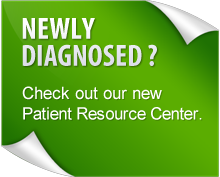Autonomic Nervous System
The part of the nervous system that controls the insides of our bodies. It regulates involuntary actions such as heart rate, blood pressure, digestion, body temperature, endocrine system, pupil dilation and many other functions.
Cardiogenic
Caused by the heart.
Chronic
Ongoing or having duration.
Dysautonomia
The umbrella term for a group of conditions caused by a dysfunction of the autonomic nervous system.
Ehlers-Danlos Syndrome
A heterogeneous group of heritable connective tissue disorders, characterized by articular (joint) hypermobility, skin extensibility and tissue fragility. There are six major types of EDS. The different types of EDS are classified according to their manifestations of signs and symptoms. Each type of EDS is a distinct disorder that "runs true" in a family. This means that an individual with Vascular Type EDS will not have a child with Classical Type EDS etc. POTS patients have a benign form of EDS called Joint Hypermobility Disorder (they do not have the vascular form).
Exercise Intolerance
The inability to exercise without symptoms.
Fatigue
Exhaustion.
Gastrointestinal
Pertaining to the stomach and digestive tract.
Honor Code
A set of rules or principles governing a community based on ideals that define what constitutes honorable behavior within that community. Signing it means you promise to uphold it.
Hope
To look forward to with confidence of fulfilment. To have DYNA on your side.
Hypotension
Low blood pressure.
Hypovolemia
Low blood volume.
Insomnia
Chronic difficulty in falling or staying asleep.
Joint Hypermobility Syndrome (JHS)
A condition that features joints that easily move beyond the normal range expected for a particular joint. The joint hypermobility syndrome is considered a benign condition that is common with POTS. It exists under the umbrella of Ehlers-Danlos syndrome but is not the vascular form.
Neurocardiogenic Syncope (NCS) and Vasovagal Syncope
Terms utilized interchangeably for a brief loss of consciousness caused by a sudden drop in your heart rate and blood pressure, which reduces blood flow to your brain.
Neurally mediated Neurocardiogenic
Caused by an interaction between the nervous system and the circulatory system.
Orthostatic
Upright position, standing.
Orthostatic Intolerance
Development of symptoms when in upright position.
Pallor
Extreme paleness.
Perseverance
Steady persistence in a course of action, a purpose, a state, etc., especially in spite of difficulties, obstacles, or discouragement. What it takes to recover from dysautonomia.
Pooling
The collection of blood or body fluids in lower portions of the body.
Postural Orthostatic Tachycardia Syndrome (POTS)
The diagnostic term for a syndrome caused by an increase in heart rate of more than 30 beats per minute from the supine to upright position.
Supine
Laying down position.
Syndrome
group of symptoms that together are characteristic of a specific disorder.
Syncope
Fainting.
Tachycardia
Excessively rapid heartbeat.
Tilt Table
A motorized table with foot support that can take a patient from laying to upright or any angle in between.
Tremulousness
Involuntary shaking.
Venous
Pertaining to veins.
Vasodilation
Arterial widening.




